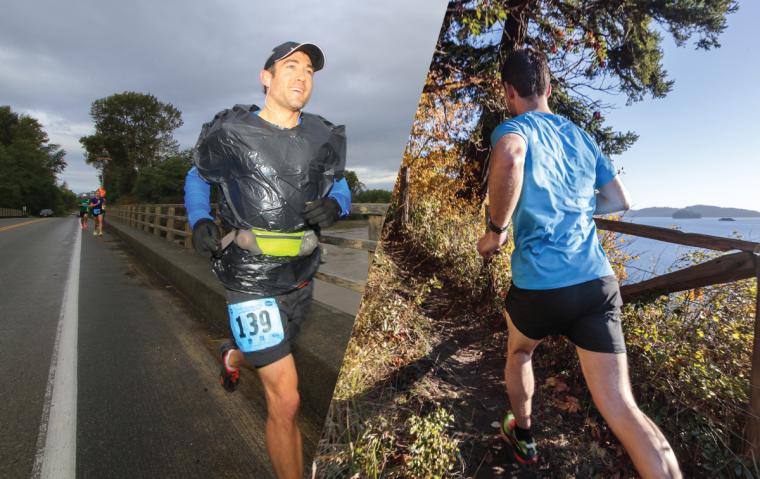
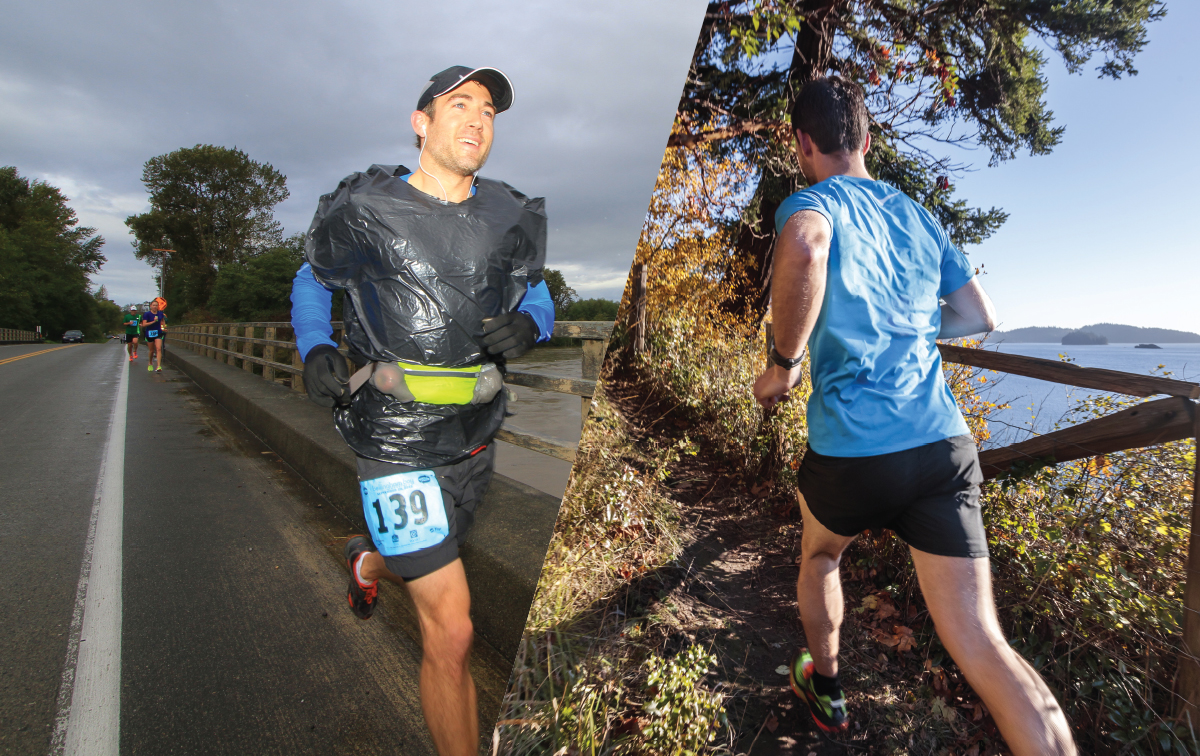
“It’s heading toward a zero-waste event, in cooperation with Sustainable Connections, which promotes sustainable practices in the Pacific Northwest,” says Eric Reinaud-Hinds, sports development director for Bellingham Whatcom County Tourism, which has an entire section on its website dedicated to running routes, trails, events and organizations. “Runners carry reusable cups that go in their pockets.”
The approach is paying off: The race, capped at 500 runners, sells out in minutes every year, according to Reinaud-Hinds.
The Chuckanut Mountain Ridge is part of the Cascade Mountain Range and one of several trails that welcome runners in this active community. The Galbraith Mountain Trails are a mecca for bicyclists who graciously share courses with runners, and the Stimpson Reserve is a hilly rainforest trail.
Whatcom County offers scenic road- running opportunities, too, with the Bellingham Bay Marathon (scheduled for September 30 this year) often referred to as “the most beautiful marathon in the Pacific Northwest,” thanks to an opening ceremony from members of the Lummi Nation — a local Native American Tribe — and a course that includes memorable views of 10,781-foot Mount Baker, Bellingham Bay, the San Juan Islands and the North Cascade Mountain. The USA Track & Field-certified course and Boston Marathon qualifier began in 2003 and continues to grow, Reinaud-Hinds says.
Not all running events are heading toward zero waste (at least, not yet), but communities from Washington to Pennsylvania realize their natural potential to cater to runners of all kinds. Regardless of whether they’re on trails or pavement, running races can be among the most significant and far-reaching sports events you offer, given the high profile they carry and the amount of community involvement they encourage.
Here are seven more running destinations to put on your radar. Take your marks…
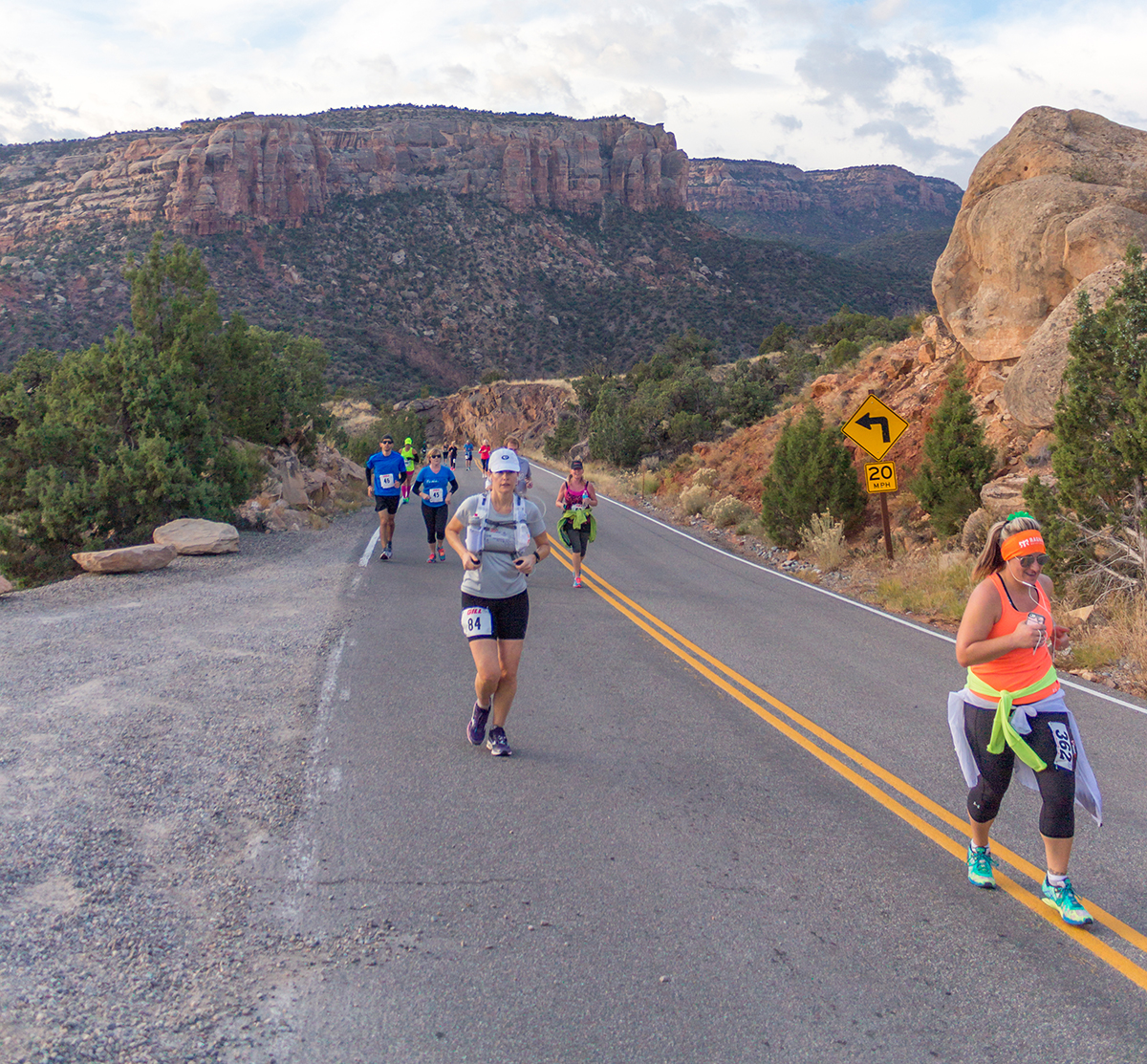
Located along the Colorado River in western Colorado, almost three-quarters of the land in Mesa County (of which Grand Junction is the county seat) is publicly owned. That adds up to about 10,000 miles of trails, according to Jennifer Stoll, executive director of the Greater Grand Junction Sports Commission.
Add in 330 sunny days per year, a lack of humidity and an elevation of 4,600 feet above sea level, and “we’re a unique niche for outdoor recreation events,” says Jennifer Stoll, executive director of the Greater Grand Junction Sports Commission. “We see a good amount of trail running and road running.”
One of the most popular events in the area is the U.S. Bank Rim Rock Run, which includes a full marathon, half marathon and two-person relay. Slated for November 3 at the Colorado National Monument state park in nearby Fruita, the event has increased its participation numbers from 140 runners when the commission took over the event in 2014 to more than 560 in 2017. The finish line also was relocated from the state park to downtown Fruita, where vendors, live music and a beer garden contribute to a festive atmosphere. Runners take in views of “towering monoliths, vast plateaus and canyon panoramas,” according to the event’s website, and “sheer-walled, red rock canyons surround the twists and turns of the course.”
Other Grand Junction-area running events include April’s Trail Running Festival — featuring a 50K, a marathon, half-marathon and 10K — and the Desert RATS Kokopelli 150, a strenuous six-day stage race in June.
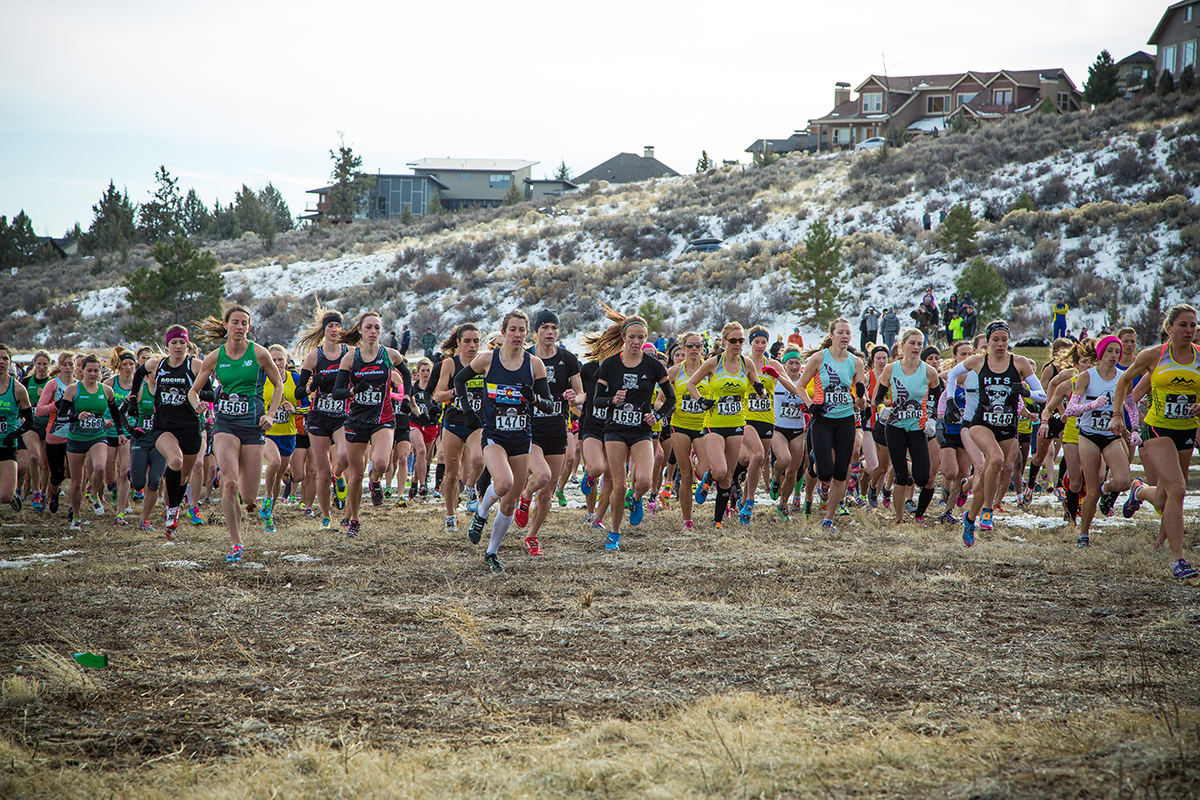
Bend is another community that takes advantage of its natural surroundings to stage memorable running events.
“We don’t have much sporting infrastructure, but we do have miles and miles of public land and trails,” says Hank Therien, director of sales and sports development for Visit Bend. “They lend themselves to the branding of Bend.”
Highlights include the Flagline 50K on September 15, which features about 4,000 feet of uphill running on high-country single-track and dirt roads; the Storm King Trail 10K Trail Race on October 13 (formerly known as Super Dave’s Down & Dirty), which takes runners along hilly single-track and dirt roads near the 7th Mountain Resort; and April’s Bend Marathon & Half, which was rerouted this year to include a new paved trail through the Deschutes National Forest.
Regardless of the race — and there are more than 25 listed on the Visit Bend website — local residents are likely to be nearly everywhere along the course, cheering on runners, Therien says. “Our culture is unlike anywhere else,” he says. “Bend is a very content community, because everybody’s here to play outside. And when you’re a runner sucking wind, and somebody waves at you, you start to run a little taller.”
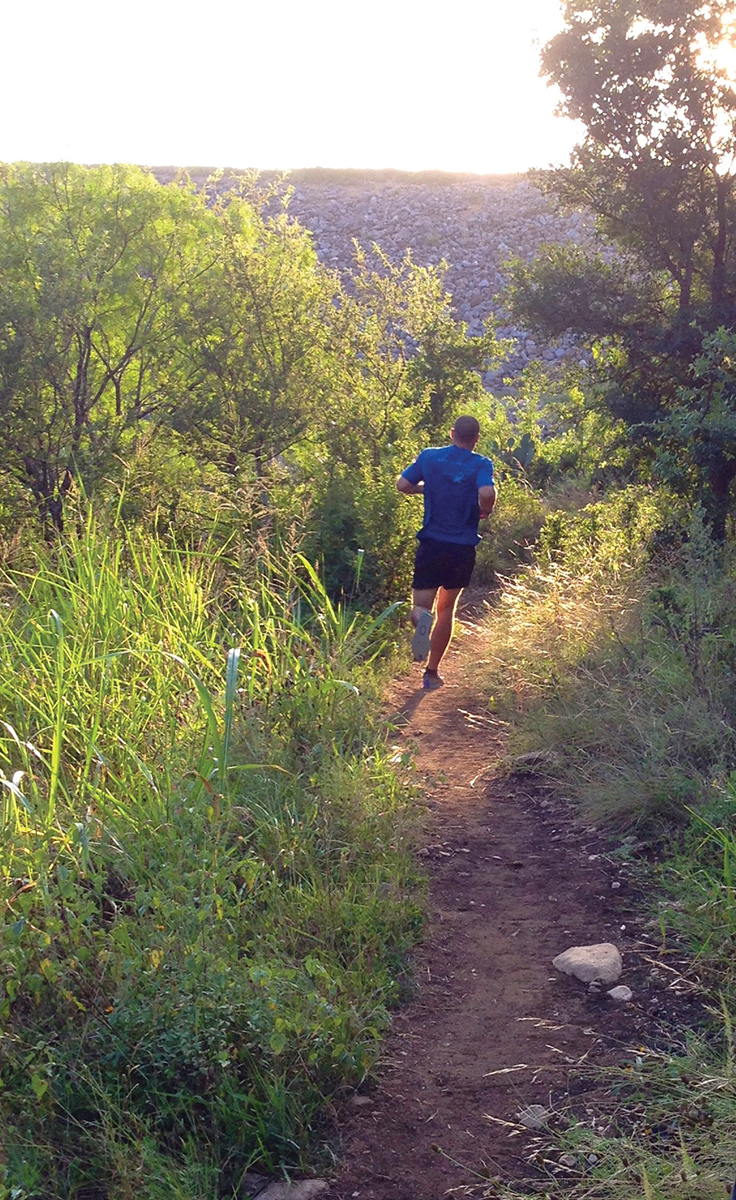
A pair of trail runs in this Texas city near Austin helped establish it as a running destination, and now local tourism officials are looking to expand that market.
January’s annual Purgatory Trail Run along the San Marcos Greenbelt follows a 10-mile course through a porous section of the Edwards Aquifer, passing by juniper groves, meadows, wetlands and oak mottes. Like the Chuckanut 50K, this is a cup-free race with runners carrying their own bottle.
Meanwhile, the Back on My Feet Bigfoot Trail Race winds through undeveloped parkland in the Spring Lake Preserve. This year’s event on November 3 will add a 30K course to the mix of 5K and 10k distances, and all proceeds go to combat homelessness.
“We’ve seen people from around the country and from down the street come to our running events,” says Clancy Hardin, destination events specialist for the San Marcos Convention & Visitor Bureau. “We have diverse course options and are open to adding more trail races.”
A popular road race in San Marcos is the recently rebranded San Marcos Half Marathon, central Texas’ oldest half-marathon. Previously known as Mo’s Better Half, the event is part of the Texas Hill Country Half-Marathon Series and now under new management with Scallywompus Events. It begins and ends at the Tanger Outlet Center, which Hardin says is the largest collection of outlet stores in North America.
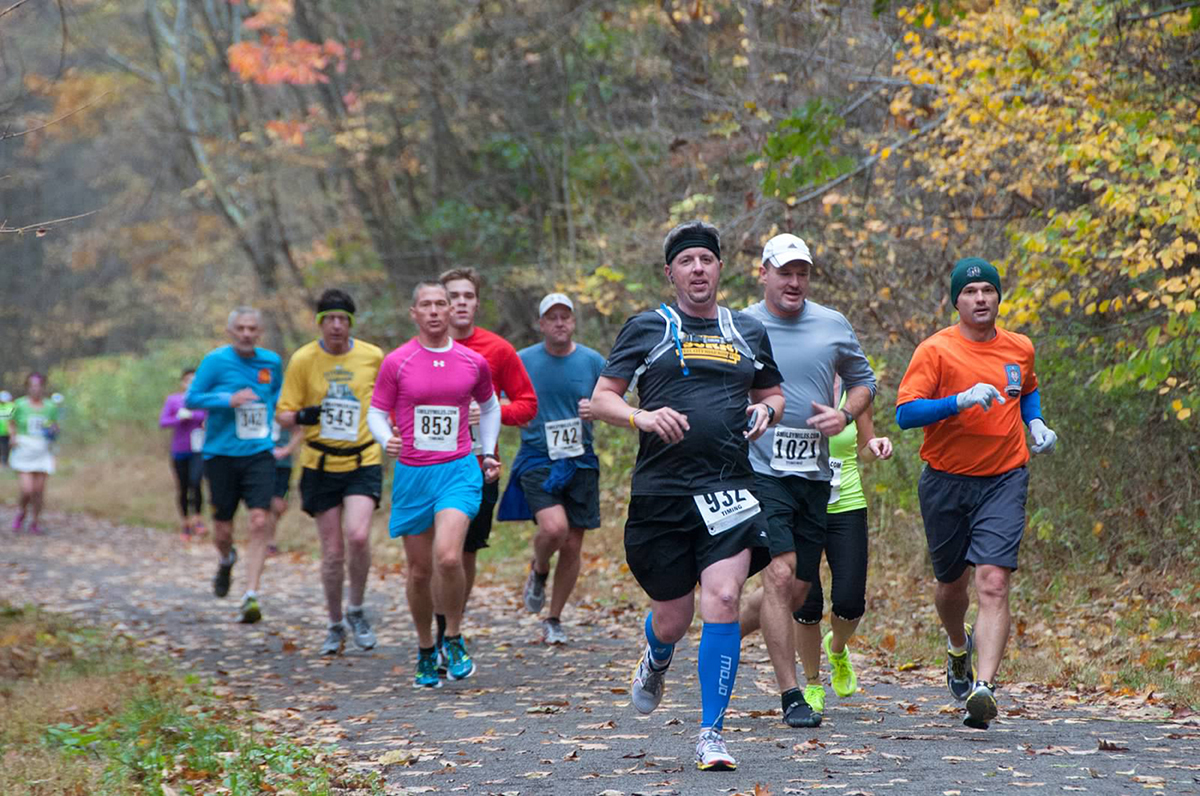
Thanks to the Mighty Moraine Man Race Series (several running events scheduled at Moraine State Park in Portersville between May and September) trail racing is gaining ground in this western Pennsylvania community. Developed in conjunction with Moraine State Park and Butler County Tourism to promote triathlons in the western part of the state and attract more people to the park, the series raises money for the Moraine Preservation Fund and the Lupus Center of Excellence at West Penn Hospital.
“It’s really put multiple levels into play for us,” Amy Pack, director of tourism development for the Butler County Sports Commission, says about the series. “And we’re always entertaining more race ideas. This area is very ripe for that.”
Another popular event is the Glacier Ridge Trail Ultramarathon and Trail Race, which also takes place at Moraine State Park in May and includes the 30K Trail Run, the 50K and 50-Mile Ultramarathons, and the 50-mile, five-person relay. The courses take runners on a single-track trail through hardwood forests.
“This race is held annually to celebrate our local trails and to provide a donation of all net proceeds to Moraine State Park, Jennings Environmental Center and McConnells Mill State Park,” Pack says. “Race sponsors have offset many of the race costs so that $78,000 could be provided to these parks over the race’s lifespan of seven years.”
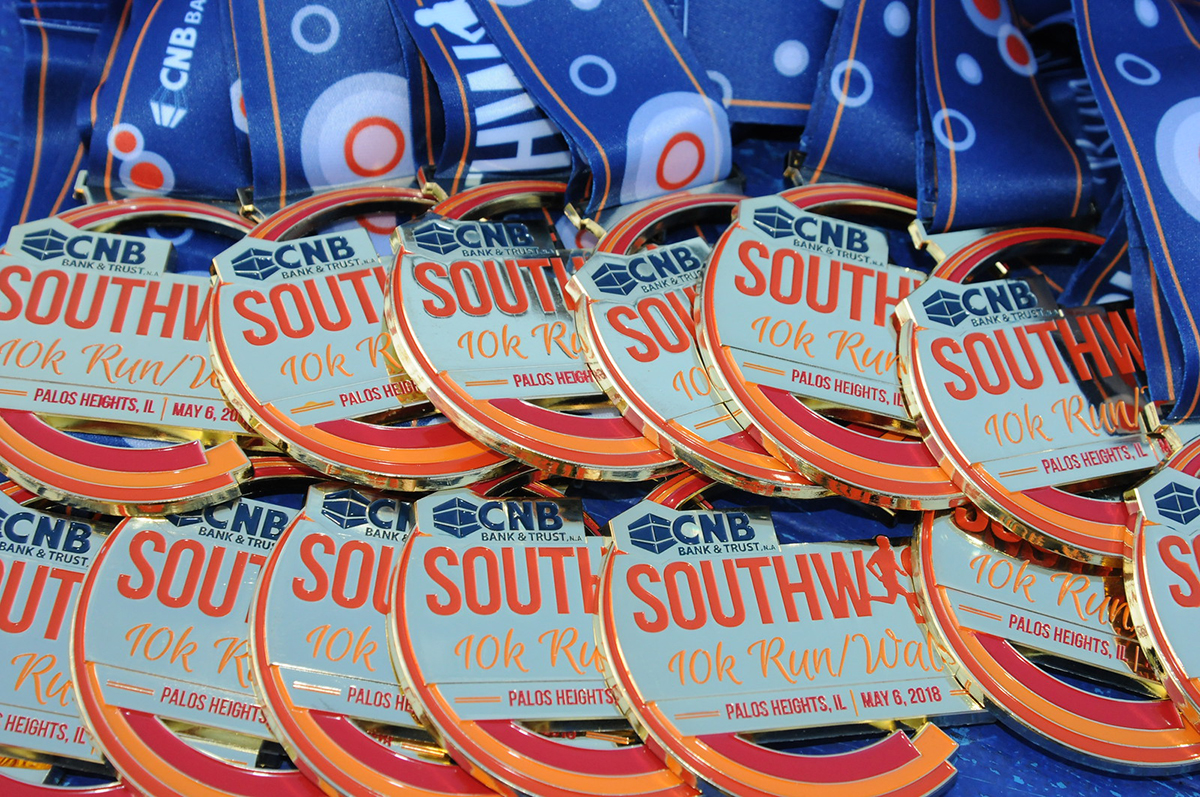
You won’t find many trails in the Chicago area, but the area known as Chicago Southland has plenty of road running opportunities in the region’s 63 municipalities. They include the upstart Lincoln-Way Half Marathon in Frankfort and the Southwest Half Marathon & 10K in Palos Heights. In 2017, that event attracted runners from 16 states (plus Brazil).
In early May, the Run For Your Life Safety 5K Run/Walk in Tinley Park was tied into the Scott Safety Firefighter Combat Safety Challenge — a national series of competitions staged in various communities to demontrate the firefighter profession’s rigor. Wearing full gear and a breathing apparatus, pairs of competitors race head-to-head as they climb a five-story tower, hoist, chop, drag hoses and rescue a life-sized 175-pound “victim.” Members of local fire departments were expected to participate.
“There are a lot of small community races, but it’s nice when they’re unique ones, like that,” says Kim Kislowski, director of marketing for the Chicago Southland Convention & Visitors Bureau, headquartered in Lansing.
Additionally, plans are in the works to introduce an off-road race next May, starting and finishing in Balmoral Park near Crete and using the trail system at Goodenow Grove Nature Preserve. And publicly owned Toyota Park in Bridgeview (home of Major League Soccer’s Chicago Fire) will host a new Spartan Race on October 20. This will be the first time the popular series of obstacle course races will feature a soccer stadium. Chicago Southland CVB officials are expecting about 5,000 competitors, and Joel Koester, the organization’s sports market manager, is in the midst of a 280-day training regimen for the event.
“It’s not just about bringing events here,” Kislowski says. “We participate, too.”
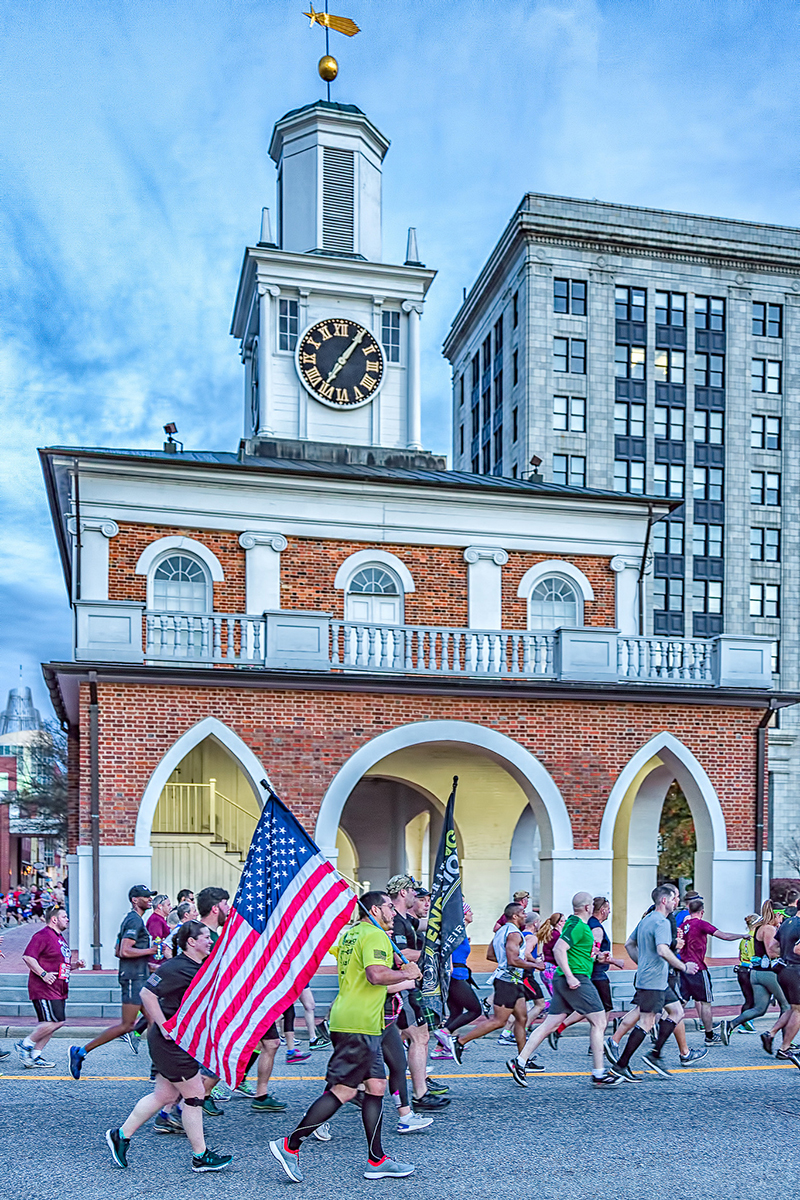
While many sports tourism destinations boast of creating a hometown feel, officials at the Fayetteville Area Convention and Visitors Bureau build that message into its promotion of the annual All-American Marathon — a Boston qualifier that includes members of the military, wounded warriors and runners from around the United States who begin the run at the Airborne & Special Operations Museum near Fort Bragg and pass through many scenic areas in the community before arriving at the largest military installation in the world.
The route is lined with flag-bearing spectators cheering the runners, and the “Wear Blue Mile” honors fallen service members.
“We are America’s home town,” says Stephanie Decatur, sports sales manager for the CVB. “So we do anything we can to help out or facilitate events with veterans. To see that kind of patriotism is a wonderful experience, even if you’re just a spectator. We can come together, whether your politics are blue, red or indifferent. For one day, we are all one.”
Fayetteville also is home to a Spartan Race at McCormick Farms in Spring Lake, a 1,000-acre property with a dense forest, rolling hills, a steep riverbank and a quarry that’s almost 200 feet deep. That event recently moved from the fall to the spring and is now held in May.
Snohomish County, Washington
Even major runs can generate a community vibe, something in which Snohomish County specializes, offering both on- and off-road running opportunities.
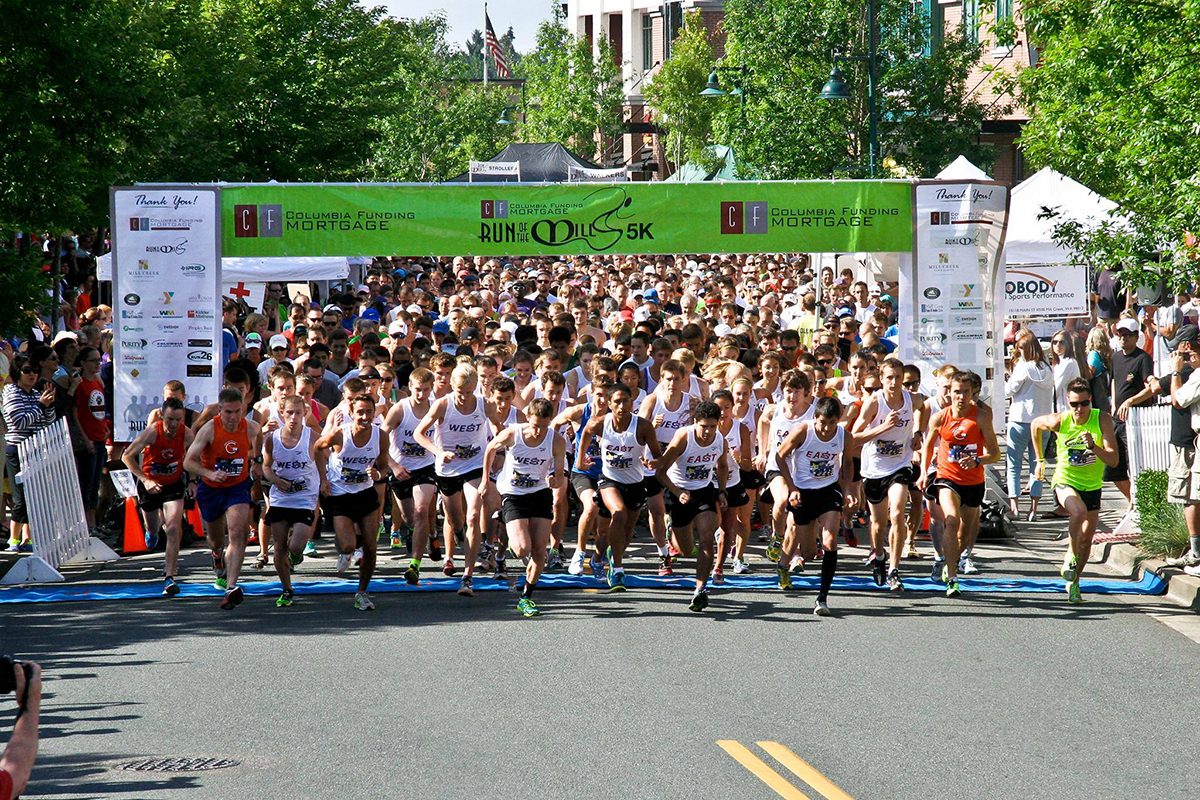
“We host a lot of runs, from the fun run 5K with proceeds going to nonprofit organizations to major events,” says Tammy Dunn, sports development director for the Snohomish County Sports Commission. “Our runs are very diverse, with scenic backdrops. And we have a core base of individuals that will walk or run these events with you. We love the outdoors here, and we love being active.” SDM

